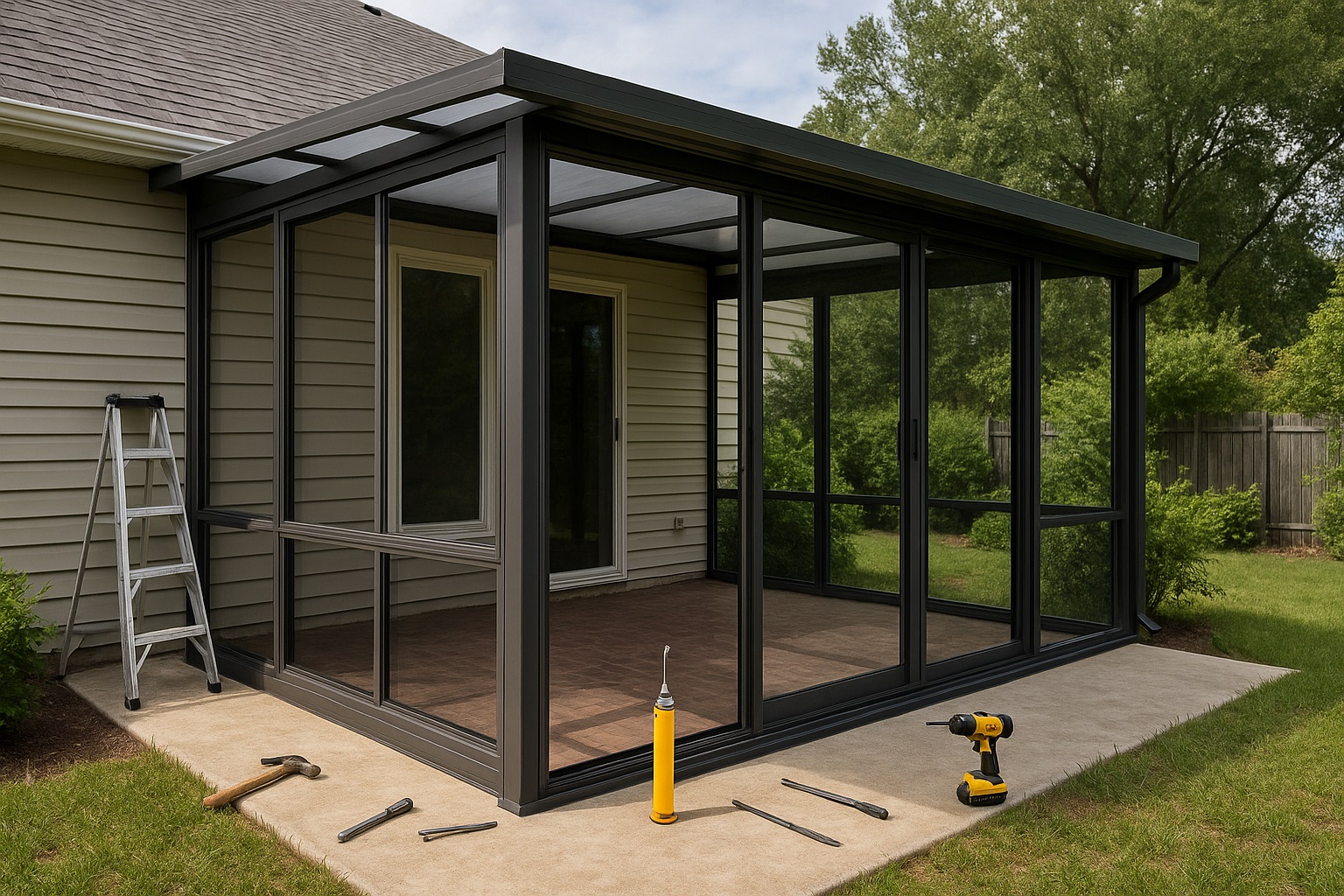
How Secure Are uPVC Windows And Doors?
How Secure Are uPVC Windows And Doors?
Let’s face it—home security is something we all think about, whether consciously or not. It’s that quiet reassurance we seek every time we turn the key and step inside our homes. And if you’re like most homeowners or renovators I meet, you’ve probably asked yourself, “How secure are uPVC windows and doors, really?”
As an interior architect who often collaborates with construction experts and security consultants, I’ve seen firsthand how materials make or break the overall safety of a space. So, in this article, I want to break it all down for you. Not in jargon-heavy, hard-to-digest industry speak, but in real, useful, practical terms. You’ll walk away understanding exactly how uPVC (unplasticised polyvinyl chloride) performs when it comes to securing your home—and whether it’s the right choice for your peace of mind.
Why Security Matters in Windows and Doors
We often think of doors and windows as entry points for light and air—but burglars see them as something else entirely: vulnerabilities. According to recent data, a large percentage of break-ins happen through ground-floor windows and rear doors. It’s sobering, I know. That’s why choosing secure frames and panels is no longer just an option; it’s an absolute must.
But here’s the good news: the materials we use today have evolved dramatically. Gone are the days when old wooden frames with flimsy locks were the norm. Enter uPVC—a material that’s not just modern but engineered with security in mind.
What Is uPVC and Why Is It Used?
For those unfamiliar, uPVC stands for unplasticised polyvinyl chloride. It’s a rigid, weather-resistant plastic that’s widely used in the construction of doors and windows. Unlike traditional PVC, uPVC doesn’t contain phthalates or BPA, making it both more durable and environmentally safer.
So why has it become the darling of architects and builders around the world? Simple: it’s low-maintenance, cost-effective, and—most importantly for our discussion today—exceptionally secure when manufactured and installed properly.
The Physical Strength of uPVC Frames
Let’s talk structure. uPVC frames are reinforced internally with galvanized steel, which greatly improves their resistance to physical force. I’ve visited manufacturing plants where I’ve seen these frames withstand significant impact tests. No exaggeration—they’re tough.
Some people assume plastic equals weak. That’s a myth. uPVC might look sleek and minimal, but underneath that clean surface is a frame built to endure pressure, prying, and environmental extremes.
Advanced Locking Systems in uPVC Units
Now, a strong frame alone doesn’t cut it. The locking mechanism is your next line of defense. Most modern uPVC windows and doors come with multi-point locking systems—this means the frame locks at multiple points, not just one. These locks engage simultaneously, making forced entry exponentially harder.
Many models even integrate shoot bolts, mushroom cams, and anti-drill cylinders. Sounds fancy, right? It is. But more importantly, these mechanisms make a real difference in how safe you feel at home. When you lock the door at night, it’s not just a click—it’s a system engaging across the entire frame.
How uPVC Stands Against Break-In Attempts
Here’s where things get real. uPVC isn’t invincible (let’s be honest, no material is), but when compared to traditional wooden frames or even some low-grade aluminium units, it holds its ground surprisingly well. Most burglars rely on quick, opportunistic entry. They don’t want to make noise or spend more than a few minutes trying to get in.
What I’ve seen—and this is echoed by security assessments—is that a properly installed uPVC system can delay an intruder enough to make them abandon the attempt altogether. That’s exactly what you want: deterrence through resistance.
Additional Security Through Thermal and Acoustic Insulation
Okay, thermal insulation might not scream “security,” but hear me out. Well-insulated windows not only save on energy bills, but they also reduce noise and minimize visibility into your home. This means fewer temptations for would-be intruders. Privacy equals prevention.
Plus, many double- or triple-glazed uPVC windows use laminated glass, which is significantly harder to shatter than single-pane options. That adds another security layer right there.
Certifications & Standards That Prove Security
If you want hard proof, look for compliance with standards like PAS 24 (for UK readers), Secured by Design certification, or CE markings in the EU. These aren’t just stickers—they indicate that the product has passed rigorous security testing.
Bona fide manufacturers will have no problem showing you these certifications. If they don’t, that’s a red flag. In fact, in my practice, I advise every client to insist on them.
uPVC vs. Aluminium vs. Timber: A Security Comparison
| Feature | uPVC | Aluminium | Timber |
|---|---|---|---|
| Impact Resistance | High (with steel reinforcement) | High | Moderate to Low |
| Maintenance Required | Low | Medium | High |
| Thermal Insulation | Excellent | Good (with thermal breaks) | Varies |
| Locking System Compatibility | Excellent | Excellent | Limited by frame age/design |
My Personal Observations from the Field
Over the years, I’ve worked on hundreds of homes—some in city centers, others in quiet rural towns. In every case where clients installed high-quality uPVC units with proper locking systems, there was a noticeable improvement in their sense of safety. And not just psychological comfort—their actual home security systems recorded fewer triggers and incidents.
One client even told me, after a break-in attempt failed due to reinforced uPVC windows, “It paid for itself that night.” That stuck with me. Because design isn’t just about beauty; it’s also about protection.
Final Thoughts
So, how secure are uPVC windows and doors? The short answer is: very secure—if you choose the right product and install it properly.
Security today is about more than locks and bolts. It’s about layered protection: solid materials, smart mechanisms, and clever design. uPVC checks all the boxes. And as someone who designs homes for a living, I can tell you—it’s a choice I often recommend with full confidence.
Still unsure? Feel free to leave a comment below or share this article with someone who’s considering uPVC for their home. Sometimes, peace of mind begins with a simple conversation.
Have questions or personal experiences with uPVC windows and doors? Drop your thoughts in the comments or share this post with a friend building or renovating their home!
2 responses to “How Secure Are uPVC Windows And Doors?”
Leave a Reply
You must be logged in to post a comment.







Can your tilt and turn systems be mounted on wooden window frames?
Thank you for contacting with us. Yes Our Tilt&Turn system is adaptable on wooden Systems. But if you are changing your private system, you have to get proper strikers for wooden frame.